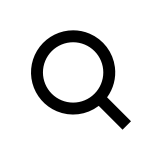Anne-Mie Van Kerckhoven / AMVK
Interview with Anne-Mie Van Kerckhoven (fragments), artist, conducted by Joanna Zielińska, 2024
► CLICK HERE TO LISTEN TO THE AUDIO
“My name is Anne-Mie van Kerckhoven. I am an artist living in Antwerp. During my time as a student at the academy, I was in the same class as Hugo Roelandt. We first met in 1970 while studying graphic design. By the end of our third year, we became a couple and stayed together for four years.
Hugo was already far more mature artistically than the rest of the class. Before he attended the academy, he had studied in Aalst, where he had excellent art teachers. He became friends with several older artists in Aalst and the surrounding areas, including Dendermonde’s Celbeton. Hugo was a very outspoken individual. He was also very tall, incredibly handsome, with striking hair… and always impeccably dressed. His mother, who worked as a house cleaner, made his clothes, which were beautifully tailored. Hugo always looked amazing. His father worked at the post office. I never thought he would be interested in me. I was far more naive, coming from a very restricted family. I hadn’t seen much of the world at all, while he was so worldly and wise.
At the beginning, he had a girlfriend who was a bit older and worked as an “entraîneuse” in bars. I also remember that, in the first year, 1970-1971, they went on a trip to Tibet, Afghanistan, and Pakistan. They traveled by road, which was very dangerous at the time. And they went to India. At one point, in the second year, 1972, they came back barefoot to the academy!I remember that very soon, probably in his second year at the academy, he got money from his parents to buy a real camera, which was very expensive at the time. But his mother paid for everything; she worked only for her boys. I know he was very particular about his photos, and probably the first pictures he took were during his trip to India.
He was a big fan of Diane Arbus’s photography. At a certain point, he started creating very large works, applying the developer with sponges and other unconventional tools. He was always experimenting with photography in different ways and was not at all concerned with framing. I remember he had a very good show with his pictures at the I.C.C. He also enjoyed printing photos on almost poster-like paper, which he displayed using only pushpins. Before that, he mounted them on small “cartons” he made himself. It reflected the artistic atmosphere of the time. We were all very enthusiastic about his work.
When I met Hugo, he was already photographing himself dressed as a woman, wearing bathing suits. That was around 1972. It was influenced by the Aalst carnival, but at the same time, it was in the air: the music stars like David Bowie, Fassbinder’s films, and the Deutsche Welle. That was the ambiance of the time. The clothes for young people like us were also very unisex. When you look at the drawings I made back then, many depicted figures that were half-man, half-woman — ambiguous and not clearly defined. That was a reflection of the era, shaped by the influence of Andy Warhol’s Factory in the ‘60s. Similar things were happening in Berlin, and perhaps even more so in Köln.
Hugo sometimes kissed boys and had friends with whom he experimented. The nice thing about the ’70s was that everything was experimental, you know? Experimentation extended to relationships with both girls and boys. But with him, things couldn’t go well for too long. After a while, I had a very hard time — the lifestyle and the drinking became too much for me, and I got sick. I loved reading in bed, but he always wanted me to go with him to cafés and bars. We went out every night.
Artistically, a lot was happening under the influence of what Roger D’Hondt was showing at the New Reform Gallery in Aalst. Artists from Poland, Czechoslovakia, and Hungary were frequently exhibited there, often small interventions with photographs. It was Fluxus, but also something between art and multiples. People were poor — we were poor too — so it wasn’t about grand, monumental art. It was about small things, small gestures. But those things were always made with great care and beauty. In that sense, it was actually a very nice period. Roger D’Hondt had a significant influence through the works he introduced to us. For example, the Wiener Aktionisten were not exhibited in museums in Belgium. Their work was very avant-garde, and people thought it was sick.
Hugo bought a 16mm camera on the black market — it had just become affordable at the time. We planned to make a film in Aalst, in the backyard of his parents’ home. His friend, the actor Jo Corthals, was going to be the star. Hugo needed a lot of smoke, so I had to burn piles of leaves all day to create it. The film was shot frame by frame, and it was my task to apply makeup in gradually evolving shades on Jo’s face. The filming lasted all day. But at the end of the day, Hugo realized he had forgotten to load the film into the camera. That was so typical of Hugo: he didn’t want to redo it the next day. I don’t think that’s good for an artist. In my view, his way of thinking often didn’t make sense — his tendency to cling too much to the negative was holding him back at that time.”
Interview with Anne-Mie Van Kerckhoven (fragments), artist, conducted by Joanna Zielińska in 2024.

